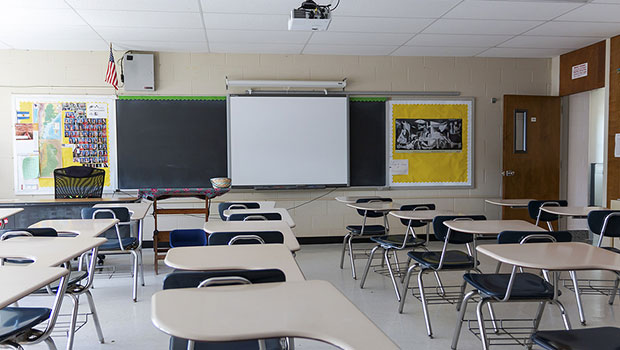Everyone agrees that under normal circumstances, in-person classroom learning is best. With the surge in COVID-19 infections, circumstances are anything but normal. Centers for Disease Control Director Dr. Robert Redfield has warned that the next three months will be “the most difficult” in public health history.
With vaccines for educators and the general public not available until after the New Year, we must act now to prevent the further spread of the virus. Now is the time to hit pause and shift to full-time remote learning in our schools until mid-January. Public safety and education should never be an experiment or a gamble — we need caution and common sense from the state.
Dr. Anthony Fauci and other infectious disease experts are warning that the next potential surge over the holidays could lead to a dark January. “We don’t need to cancel Christmas,” Fauci said, but people should rein in their festivities or we will see another big surge. “What I am saying is that we need to be really careful.”
Former FDA head Dr. Scott Gottlieb, who regularly joins Gov. Ned Lamont’s daily coronavirus briefings, warns that U.S. deaths will near 400,000 by the end of January. “As bad as things are right now, they’re going to get a lot worse.”
The governor and education commissioner have said repeatedly that they want to keep schools open for “as long as we can.” That time has come. The original state guidelines said that current infection rates in the state would “favor moving to remote learning.” The state changed those guidelines in October to say that high infection rates mean “less in-person learning.” Every day, virus outbreaks are forcing schools to reassess whether they can safely continue in-person learning; many are closing. Even European countries once seen as success stories for keeping schools open, such as Germany and the Netherlands, are changing course and closing their schools.
Let’s face facts: In the midst of a pandemic, schools are not the safest place for children or educators. School districts and local health departments are struggling to keep up with contact tracing as the number of new community and school cases overwhelms the health departments. Most schools have inadequate ventilation systems, persistent and worsening shortages of teachers and staff who are ill or quarantining, and a troubling lack of consistency in COVID-19 reporting and safety protocols.
While dozens of schools have taken proactive steps to move to all-distance learning through mid-January, our state remains a patchwork of partially opened districts, hybrid and fully remote learning. School districts must be spared the daily decisions about whether and when to close — decisions that often come too late, disrupt routines and schedules, and add to the stress and anxiety already rampant in our communities.
Rather than wait for another surge after the winter break, one that could put countless members of the education community at risk, the state must be proactive and pause in-person learning until after the holiday spike. It will provide a layer of safety that all Connecticut residents desperately need and deserve.







